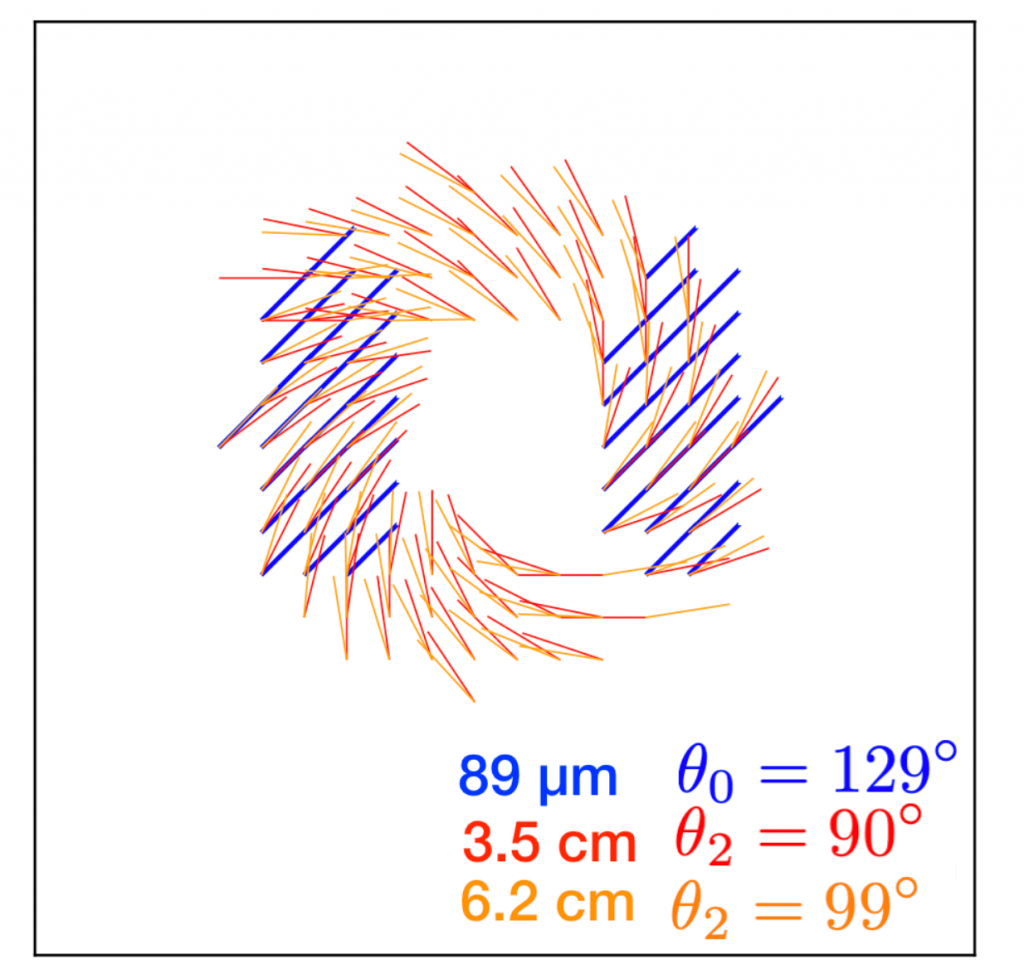by Anashe Bandari
A black hole at the center of a galaxy plays a role in the galaxy’s death, eating up their surrounding dust and gas and not leaving enough matter behind for new stars to form. Gravity alone, however, is not strong enough to account for all this material transfer on its own.

Theories have proposed that magnetic fields could be helping gravity in feeding black holes, spooning matter in their direction. With the help of observations from the Stratospheric Observatory for Infrared Astronomy, or SOFIA, these theories have now been confirmed. By mapping out the shape of the magnetic fields in the central region of NGC 1097, a spiral galaxy, researchers discovered the magnetic fields assist in directing dust and gas toward the supermassive black hole at the galaxy’s center.
“We can, for the first time, analyze the effect of the magnetic field in the gas flows toward [the central] star-forming regions using SOFIA and the galaxy’s center using radio polarimetric observations,” said Enrique Lopez-Rodriguez, lead author on the recent paper describing NGC 1097’s magnetic fields.
NGC 1097 has a region of intense star formation toward its center, known as a starburst ring. Because looking at magnetic fields in very dense areas is one of SOFIA’s strengths, Lopez-Rodriguez and his team used SOFIA to probe the dense regions merging into the starburst ring. This was complemented by radio polarimetric observations within the starburst ring, a different type of astronomical observation better suited for studying sparse regions.
The researchers found a striking difference in the morphology of the magnetic fields between the two regions. The SOFIA observations show the magnetic field feeding matter into the starburst ring, while the radio polarimetric observations show the magnetic field spiraling into the galaxy’s center, feeding the supermassive black hole.

But despite this striking difference, the two are not fully disconnected: The study proves that the magnetic fields in the galaxy help deliver gas and dust to the black hole at its center. Altogether, the large-scale fields follow the shape of NGC 1097’s spiral arms, channeling matter from the arms to the starburst ring in its innermost regions, and from the starburst ring deeper toward the black hole, where it can eat the material up.
This confirms that it is not just gravity that helps a black hole feed on the material in its host galaxy, but magnetic fields also play a role.
“Our observations also provide evidence that the magnetic fields located in the proximity of the black holes at the center of active galaxies may be coming from the large-scale magnetic field in the host galaxy,” Lopez-Rodriguez said.
This first observation of magnetic fields nourishing black holes helps answer critical questions about how galaxies evolve, and ultimately die.

SOFIA is a joint project of NASA and the German Space Agency at DLR. DLR provides the telescope, scheduled aircraft maintenance, and other support for the mission. NASA’s Ames Research Center in California’s Silicon Valley manages the SOFIA program, science, and mission operations in cooperation with the Universities Space Research Association, headquartered in Columbia, Maryland, and the German SOFIA Institute at the University of Stuttgart. The aircraft is maintained and operated by NASA’s Armstrong Flight Research Center Building 703, in Palmdale, California.
